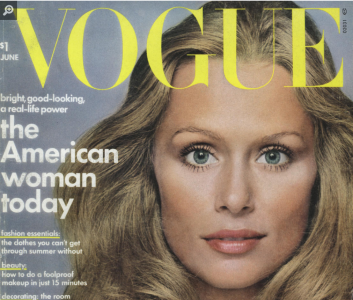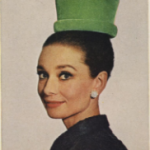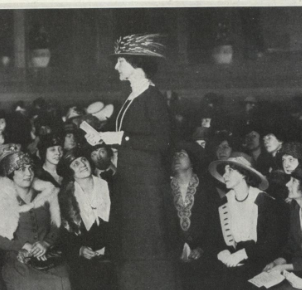The Vogue Archive: a Rich Resource for Cultural Studies

Lauren Hutton cover June 1, 1973
The Vogue Archive includes a high quality scanned image of every page of the magazine from 12/17/1892 to the present. An excellent resource for Gender and Sexuality Studies, Theater, Design, and American Cultural Studies, the Archive indexes both articles and advertisements.
For more than 120 years, the creative content of Vogue magazine has been a driving force in fashion and culture. At the same time, it has been a potent marketing vehicle for a wide range of products targeted at women: housewares, clothing, jewelry, cosmetics, cigarettes, and pharmaceuticals.

Audrey Hepburn in a Givenchy hat November 1964
One of the most useful features of The Vogue Archive is its indexing. Searches can be limited to advertising and results can be limited to articles with illustrations. Special fields (with drop down indexes) are provided for photographers, models (or other person pictured), and corporations. For instance, a search for Audrey Hepburn — a Vogue staple from the 1950s on — returns classic photo shoots from the 1960s with Hepburn as the premiere model for Givenchy.
Results can be quickly limited and sorted by year and/or date, so it is easy to research the history of marketing, or follow a style as it changes through time. The graphic content is rich throughout, and ideal for design of historically accurate costumes.
Searching The Vogue Archive for information that would seem to fall outside the editorial scope of the magazine can be very fruitful. A search for ‘voting’ returns virulently anti-suffragist editorials from the first decade of the twentieth century. For instance, the editorial from November 9, 1909, “Judging the Suffragists by Their Works,” sounds eerily like statements that have been made about the Black Lives Matter movement in this election cycle:
“…what has been the record of the suffragists? Have they not played a rather ignoble, if not conspicuously unpatriotic, role by interrupting meetings, and by demanding of candidates, who were fighting for other and, at least for the moment, graver issues, that they commit themselves in regard to votes for women…”

Voter education September 15, 1918